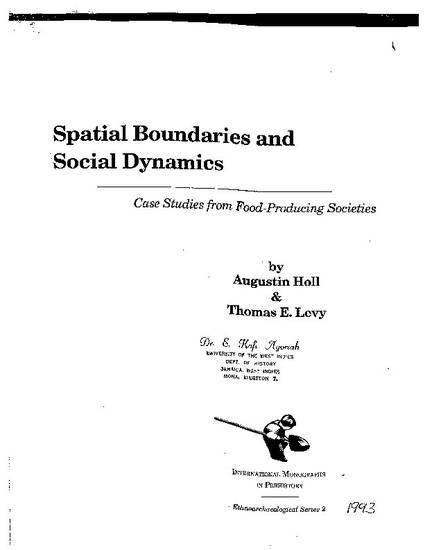
- Land settlement -- Ghana,
- Villages -- Ghana,
- Ghana -- Rural conditions,
- Rural land use -- Ghana,
- Ghana -- Social life and customs -- History
One fascinating aspect of archaeological analysis is the explanation of the frequency with which material manifestations of man's behaviour are bonded together. The complexity of the interconnections and associations makes it even more challenging and exciting. Areal variations of the relationships between cultural phenomena are so numerous that archaeologists have, over the centuries, looked for regularities or patterning among distributions of these material manifestations. It is not the patterns that are recognised nor the fact that their distribution varies from place to place that is of greatest interest. Rather it is the past behaviour of the society concerned that is of significance to the archaeological analysis. The basic assumption in dealing with patterns consists of convictions related to recurring modes of human activities or behaviour.
